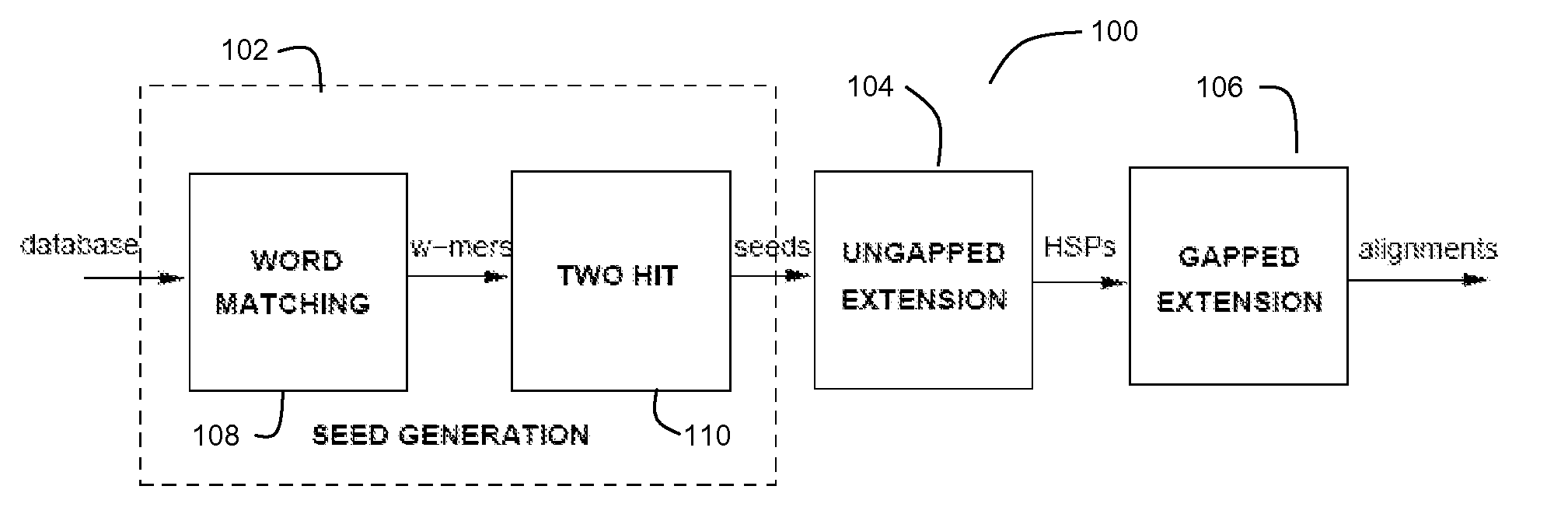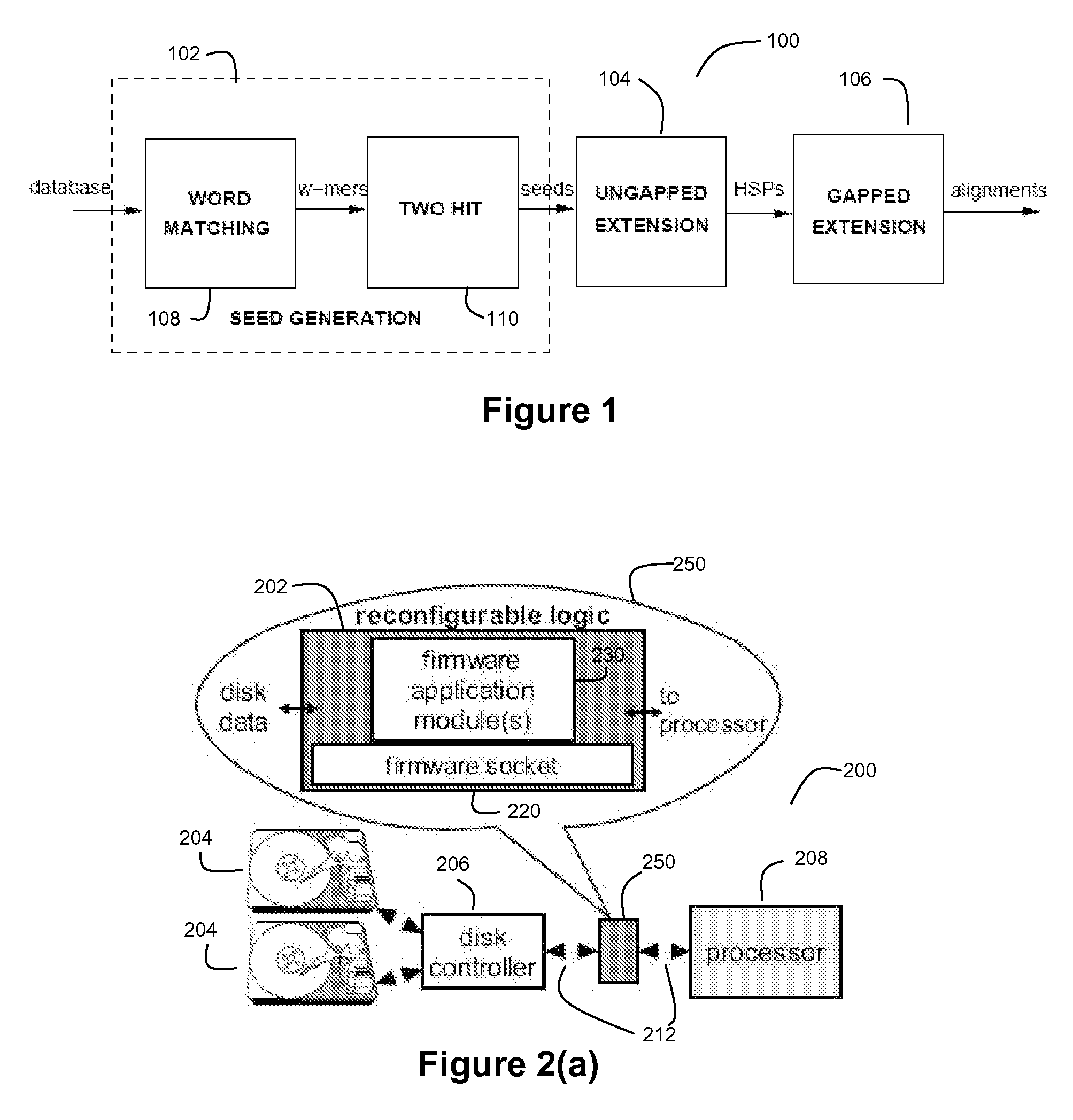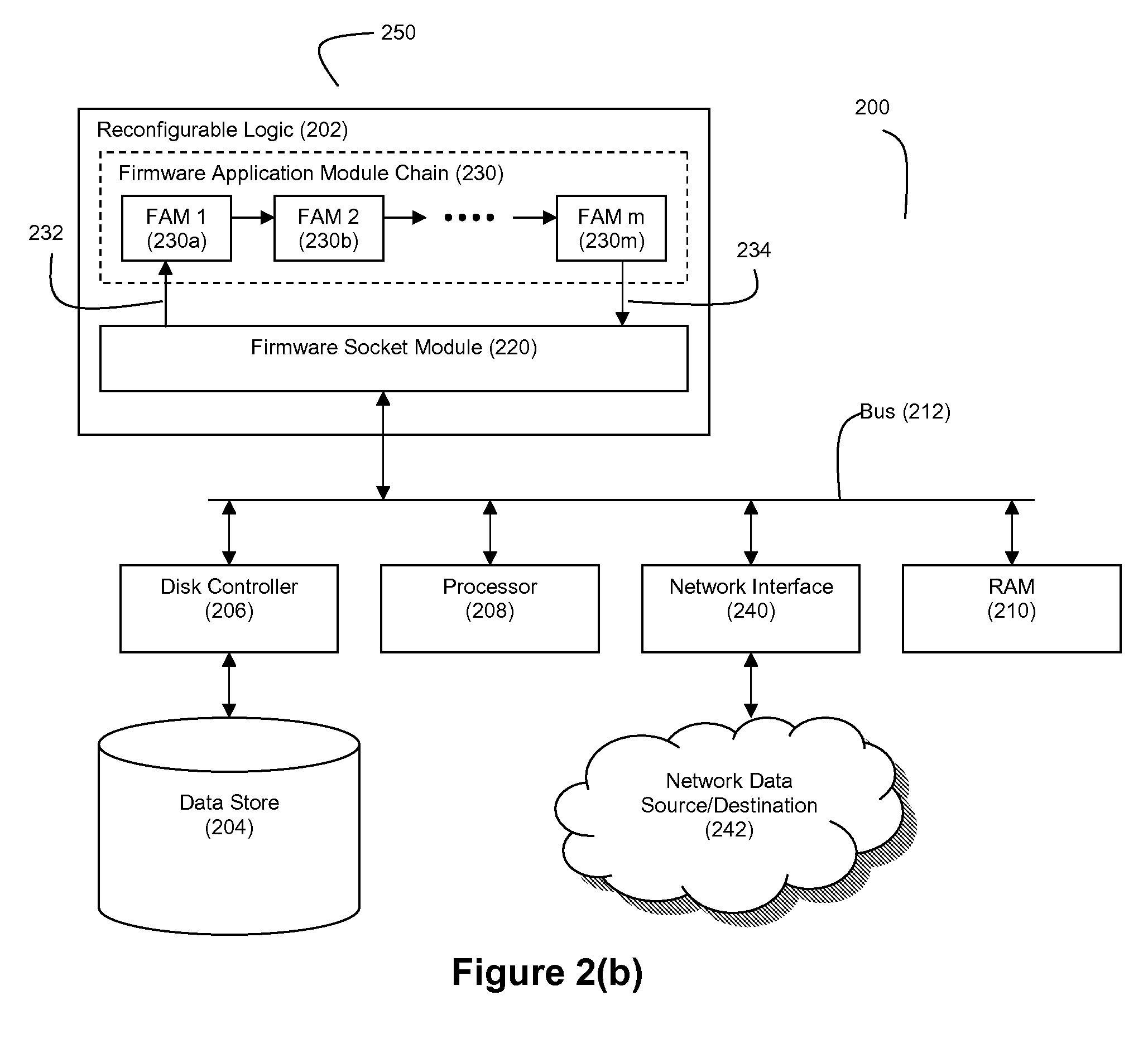Method and Apparatus for Protein Sequence Alignment Using FPGA Devices
a technology of protein sequence and alignment method, applied in the field of sequence similarity searching, can solve the problems of computationally expensive direct measurement of edit distance between sequences, fast-decade-old sequence analysis tools, and high computational costs of sequence analysis, so as to improve the throughput of seed generation pipeline, reduce the amount of memory capacity needed, and efficient use of memory resources
- Summary
- Abstract
- Description
- Claims
- Application Information
AI Technical Summary
Benefits of technology
Problems solved by technology
Method used
Image
Examples
Embodiment Construction
[0059]FIG. 1 depicts an exemplary BLASTP pipeline 100 for a preferred embodiment of the present invention. The BLASTP algorithm is preferably divided into three stages (a first stage 102 for Seed Generation, a second stage 104 for Ungapped Extension, and a third stage 106 for Gapped Extension).
[0060] As used herein, the term “stage” refers to a functional process or group of processes that transforms / converts / calculates a set of outputs from a set of inputs. It should be understood to those of ordinary skill in the art that, any two or more “stages” could be combined and yet still be covered by this definition as a stage may itself comprise a plurality of stages.
[0061] One observation in the BLASTP technique is the high likelihood of the presence of short aligned words (or w-mers) in an alignment. Seed generation stage 102 preferably comprises a word matching module 108 and a hit filtering module 110. The word matching module 108 is configured find a plurality of hits between subs...
PUM
 Login to View More
Login to View More Abstract
Description
Claims
Application Information
 Login to View More
Login to View More - R&D
- Intellectual Property
- Life Sciences
- Materials
- Tech Scout
- Unparalleled Data Quality
- Higher Quality Content
- 60% Fewer Hallucinations
Browse by: Latest US Patents, China's latest patents, Technical Efficacy Thesaurus, Application Domain, Technology Topic, Popular Technical Reports.
© 2025 PatSnap. All rights reserved.Legal|Privacy policy|Modern Slavery Act Transparency Statement|Sitemap|About US| Contact US: help@patsnap.com



